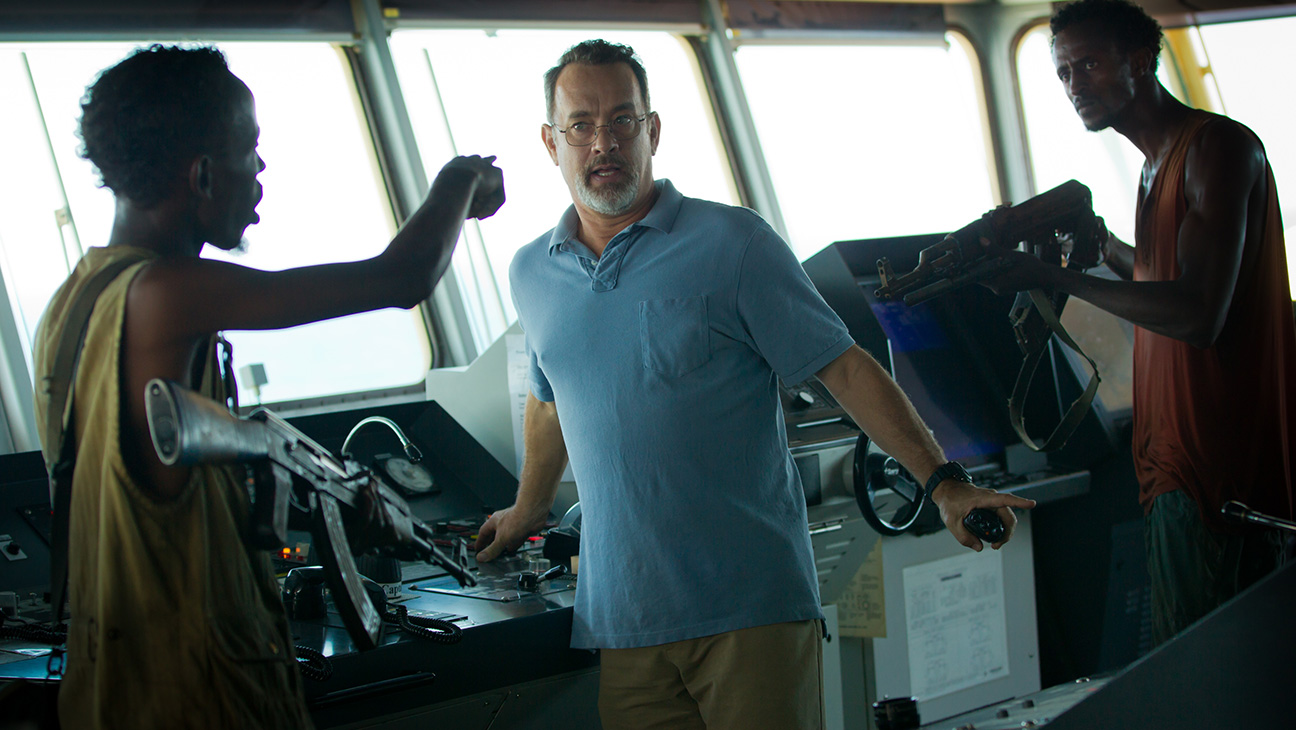Movie Review: ‘Captain Phillips’ Is An Almost Masterpiece

It’s hard not to watch Captain Phillips without recalling the Danish A Hijacking from earlier this year. Both are different enough to not completely overlap but there are many similarities.
The first is that they’re both about cargo ships being hijacked by Somali pirates. Secondly, they both utilize a realism, especially when portraying said pirates. However, whereas A Hijacking was more about the offshore negotiations back in Denmark and the psychological toll on the crew and company CEO, Captain Phillips stays focused on the ship and the titular character played by Tom Hanks. The latter is also based on a true story.
It wouldn’t be a stretch to say that Captain Phillips is a Hollywood version of a pirate attack despite director Paul Greengrass’s (The Bourne Ultimatum) use of handheld cameras to create a documentary-like atmosphere. It’s a fraught thriller that finds Hanks in top form—and it feels like it’s been a while since he’s been so grea—but it’s also unnecessarily long and the tension begins to wane towards its end.
Captain Richard Phillips is introduced leaving his suburban town with wife Andrea (Catherine Keener) as they discuss how his times at sea aren’t becoming any easier as they age. It’s a setup that Greengrass and writer Billy Ray (The Hunger Games) never return to and Keener is never even seen or heard from again. This is the largest hanging thread of the film and also the most indicative that it’s a “Hollywood” film. It’s not a complete deal breaker but it is an unneeded set up for Phillips as a normal American family man, and one wonders if it was only left in to include Keener for a few minutes.
Once Phillips is on the water off the shores of Somalia is where the action really begins. Greengrass does do a good job of maintaining focus on the action and the rising anxiety of Phillips and his crew as the possibility of a piracy take over becomes a reality. Once they do board, Phillips instructs most of the crew to hide deep within the engine room and plays dumb with the pirates’ leader Muse (Barkhad Abdi) in hopes of ending the standoff as quickly as possible. But things get out of hand and wanting more than the $30,000 that’s on board, the pirates end up holding Phillips hostage on the ship’s lifeboat.
Greengrass does create a convincingly naturalistic atmosphere and Hanks never pushes the character into an over-the-top martyr, but the film never really digs at anything beneath the surface. Phillips attempts to create a rapport with Muse, subtly questioning his role as leader when another pirate Najee (Faysal Ahmed) can’t control his outbursts, and there appears to be some sort of suggestion at a deeper connection between the two leaders but it never goes farther than that.
Greengrass is rightfully more interested in recreating the events as they actually happened but it would have served the film well to have a deeper psychological thread. There’s an interesting dynamic between the two “captains” who are both in over their heads in the situation that’s hinted at between caught glances and delicate rhetoric on Phillips’s part but it’s never quite fleshed out.
All of this isn’t to say that film isn’t short of excellent because it really is an exciting film. It’s just that when a film is so close to perfection, it’s hard not to dwell on the small cracks in the beautiful whole. It’s still an engaging film that expertly captures the fear, claustrophobia, and anxiety that plays out with such a traumatic event. If only Greengrass could have pulled back slightly and trimmed down the film so the impact is fully felt instead of slowly fizzling out towards the end.
Rating: 4 out of 5.








